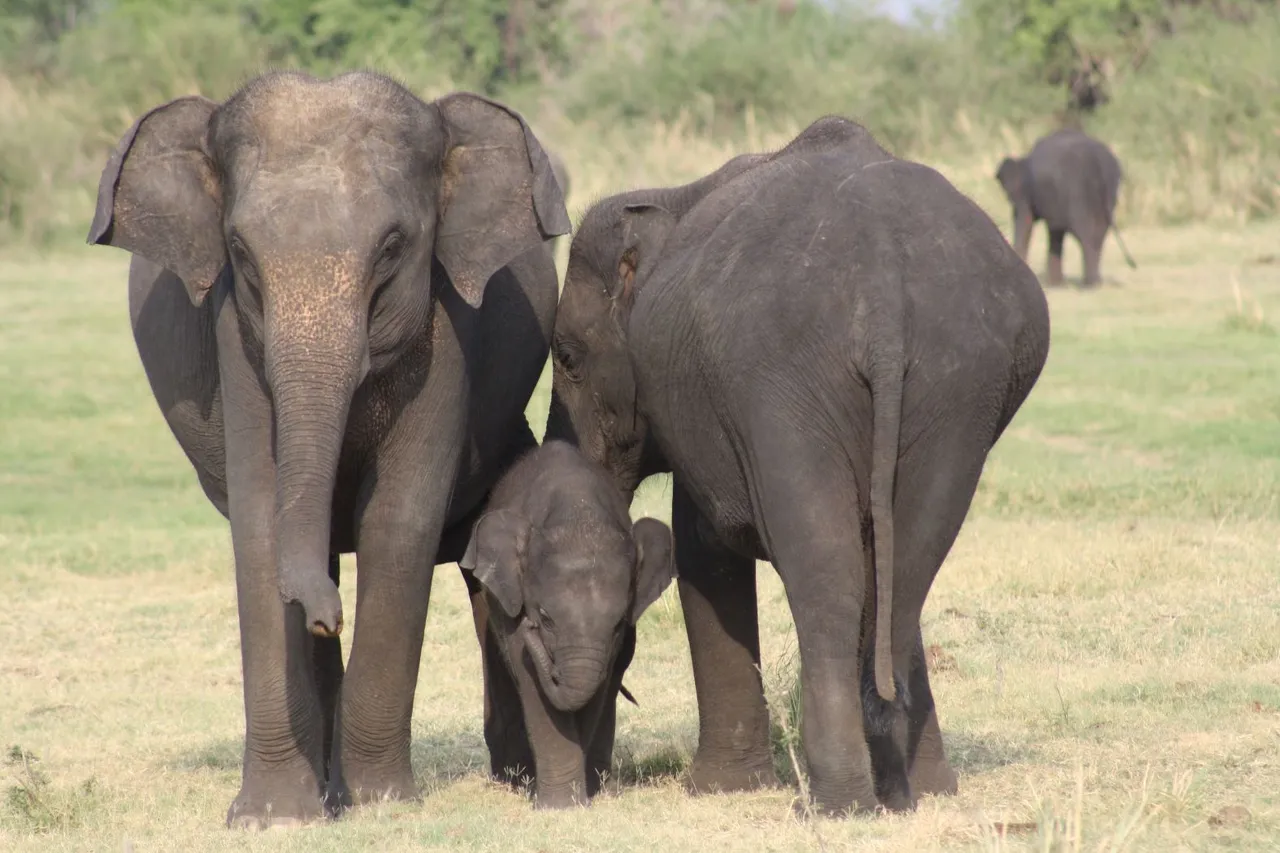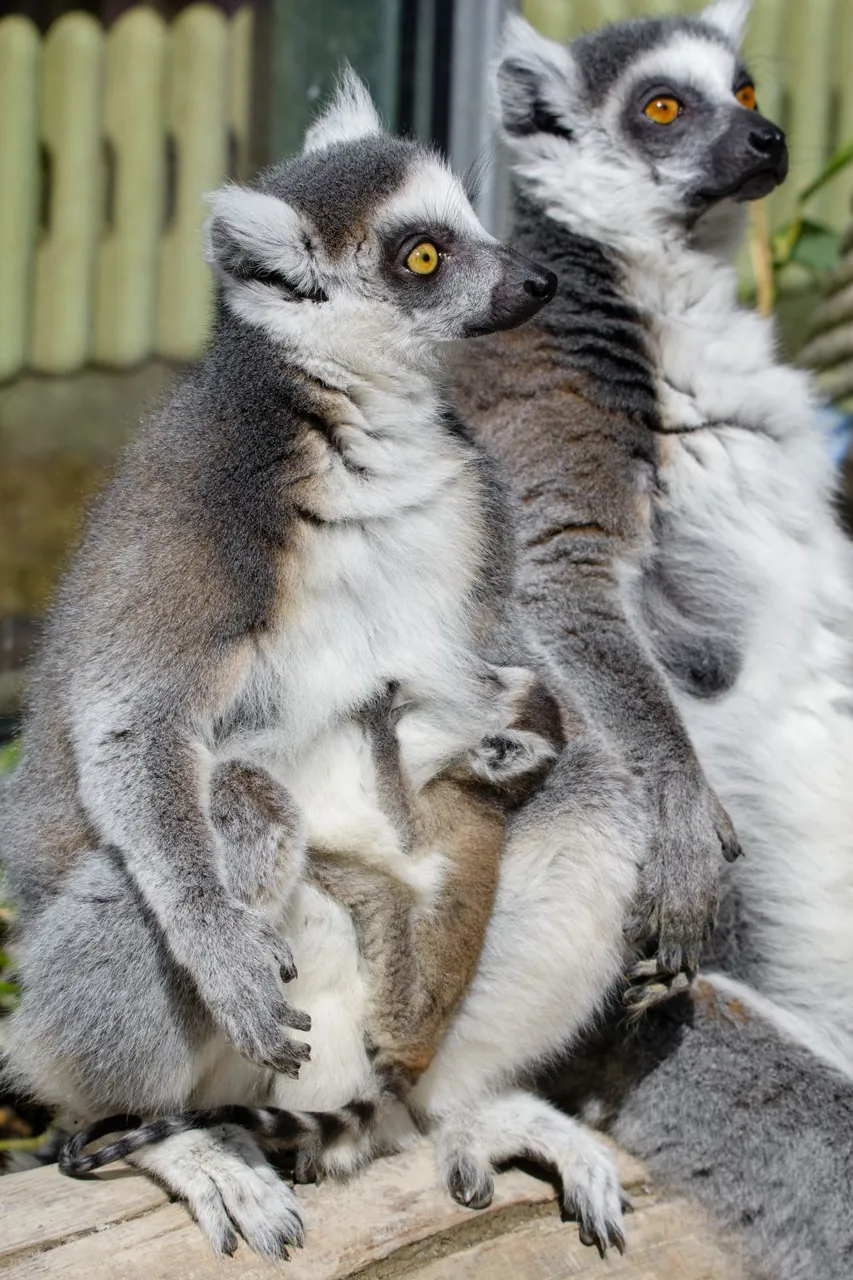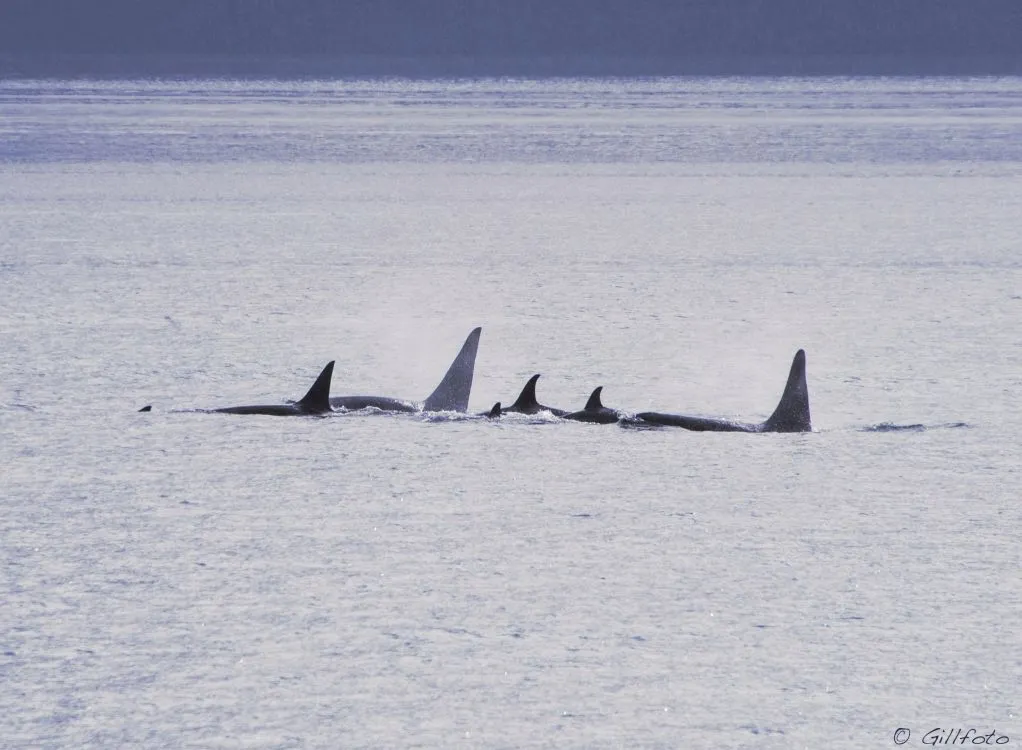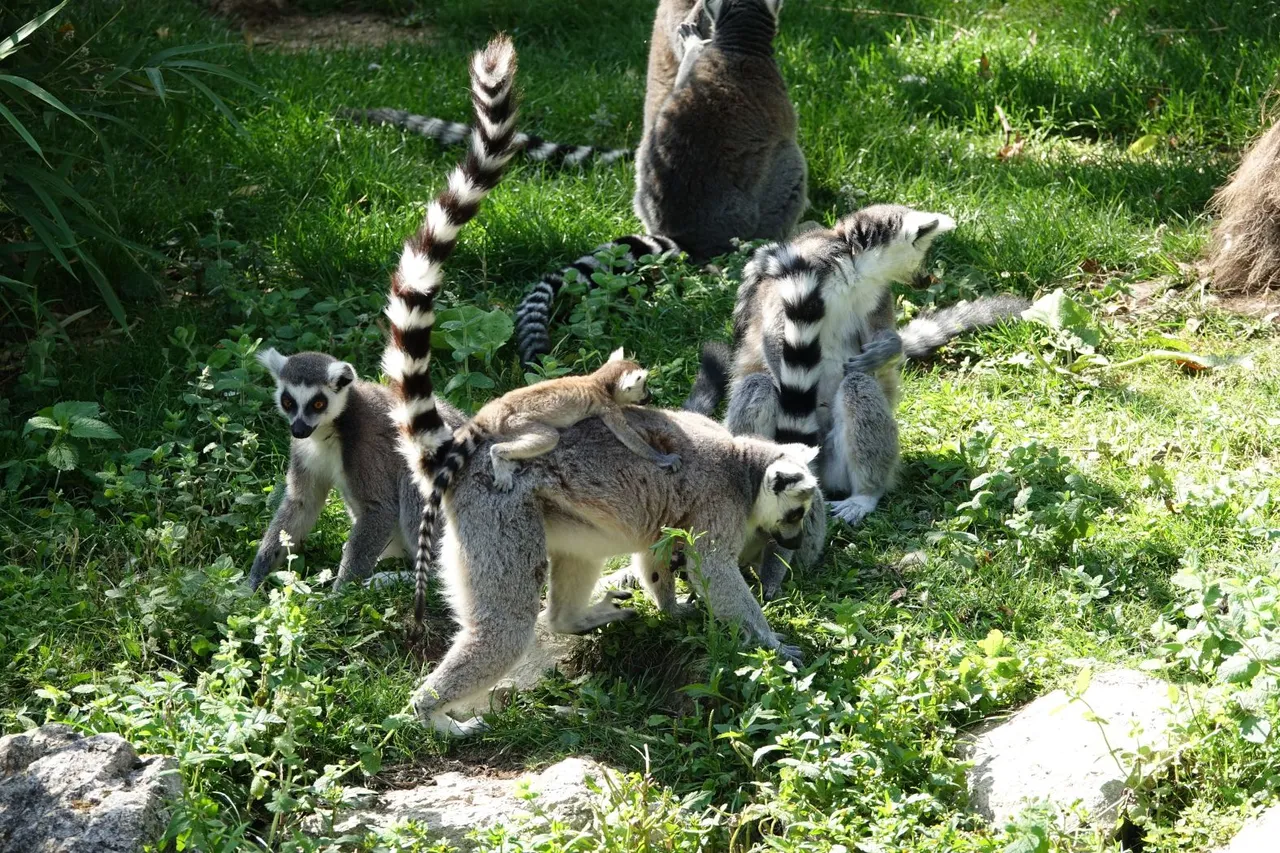Are grandmothers a good thing? Is there any biological benefit to having a grandmother around? In the case of some species, the answer is an emphatic, "Yes." There is a hypothesis about the benefit of grandmothers, and it is called, The Grandmother Effect. This hypothesis was first formulated by British biologist Peter Medawar, in 1952.
Giraffes

Charles J. Sharp from Sharp Photography sharpphotography. Used under CC 4.0 license.Shown in the picture is a group of female giraffes from Tswalu Kalahari Reserve, South Africa.
It was once believed that giraffes were simple animals. They had been described in the past as having no lasting bonds with their fellows. This, it turns out, is far from true. Giraffes have complex social relationships and maintain multi-generational bonds that last a lifetime. A giraffe expert from the University of Bristol explains: "evidence of...cooperative care of young and female-bonded kin groups, suggests giraffes...may actually live in a matriarchy". This recent understanding of giraffe behavior suggests that the Grandmother Effect may be a fact of giraffe society.

Elephants
Two Female Elephants, With a Calf

Image credit: Shankers., from Dubai. Used under CC 2.0 license. I don't know the ages of the adult elephants in the picture, but in one 2016 study, it was found that the calf of a young elephant mother was eight times more likely to survive if its grandmother lived close by. Not only do the calf's chances for survival increase when Grandma is present, but so do the chances that daughters will reproduce. The presence of a grandmother elephant appears "....to boost the reproductive rate of their daughters".
Both elephants and giraffes have matrilineal societies. Females form close relationships with their calves, and with other females in their group. In both giraffe and elephant societies, females live well beyond their reproductive years. The mature female, the grandmother, provides guidance, support and nurturing to the younger generations.

Hyenas
YouTube Video Showing Hierarchy Among Group of Female Hyenas

"The highly matrilineal societies of spotted hyenas are unique among carnivores and closely resemble the societies of many cercopithecine (a type of monkey) primates." (From the Royal Society publishing) Hyenas live in multi-generational groups that are dominated by females. In hyena groups, inheritance includes not only a genetic transfer, but a social transfer. The offspring of a dominant female inherit her status and are groomed to behave accordingly. This is called 'social inheritance'. It has been suggested that "...traits some researchers assume to be genetic, such as the tendency to socialize and organize socially, can rather be explained by simple, social copying processes..."

Research performed since Peter Medawar's paper (referenced at the beginning of this blog) was first published, suggests that the Grandmother Effect may be seen in a wide range of species that have matrilineal societies. An article published by a Mills College animal research scientist suggests these relationships also exist in: killer whales, lions, bonobos, and lemurs. It also exists, according to most researchers, in humans.
However, in human society, matrilineal hierarchies are rare. An article in the Journal Royal Society B: Biological Sciences explains, "Male-biased social structures predominate in human cultures, leading anthropologists to puzzle over explanations for the relatively rare societies organized around maternal kin".
Women From the Minangkabau Ethnic Group, Indonesia

Image credit: Umar Khatab. Used under CC 1.0o,2.0,2.5,3.0 According to anthropologist Alexander Stark, the matrilineal system of the Minangkabau has persisted throughout history.
The Grandmother Effect hypothesis arose from what biologists considered a puzzle: Why do women survive for so long after their reproductive lives have ended? Approximately one third of a woman's life is spent in non-reproductive years. The extended longevity, it is suggested, has an Evolutionary benefit. There are "indirect fitness benefits gained by grandmothers helping raise their grandchildren".(From Current Biology)
Another suggested evolutionary benefit is that grandmothers who have long lifespans bequeath that longevity to their grandchildren. The grandchildren have an increased chance of surviving, because of the Grandmother Effect, and therefore have an increased chance of passing along the genetic tendency toward long life to their own offspring.

Lemurs
Lemur Group, With Suckling Young

Image credit: Mathias Appel. Public domain. This picture did not identify the gender of the two adults. However, researchers have observed that among ring-tailed lemurs, "...mothers are dominant over their adult daughters". Also, apparently a grandmother determines who can live in a troop and who cannot. With the death of a grandmother, it has been observed that unfavored females are evicted from the group by the new, dominant grandmother.

Humans
A 2019 report published in the journal Current Biology looks at two studies that show the Grandmother Effect operating in human societies.
In one study, Using Geographical Distance as a Potential Proxy for Help in the Assessment of the Grandmother Hypothesis, researchers looked at a pre-industrial society to determine if proximity to the grandmother had bearing on the strength of the Grandmother Effect. Histories of multi-generational families were studied over a period of more than 150 years. The result?
Grandmother Carrying Child in Borana Ethiopia

Image credit: Ray Witlin, Courtesy of the U. N. Public domain.
Adult women who bore children while their mothers were alive produced more children over their lifespan, and successfully (more children survived) raised more children to the age of 15. The farther from their mothers these daughters lived, the less pronounced was this 'Grandmother Effect'.
Another study, Limits to Fitness Benefits of Prolonged Post-reproductive Lifespan in Women, looked at the relationship between increased age and fragility of grandmothers and benefit to grandchildren. It turns out that there is a decline in benefit with a decline in grandmothers' capacity to help. Daughters were often beyond peak reproductive years at that point, and so the loss to grandchildren would be minimal, in most cases.
Grandmother and Child, Saint Petersburg, Russia (1931--Leningrad))

Image credit: Branson Decou (1892-1941). Public domain.
Interestingly, some long-lived, frail, grandmothers, had a negative effect on the fitness of daughters/grandchildren. In these cases it was the paternal grandmother that had a negative effect, not the maternal grandmother. So, the matrilineal hypothesis still held up. (Mothers in law ?)

Killer Whales
A 2019 article (Postreproductive Killer Whale Grandmothers Improve the Survival of Their Grandoffspring) published in PNAS reveals research that directly proves the existence of the Grandmother Effect in killer whales.
Killer Whale Pod in the North Pacific

Public domain.
The PNAS article states that killer whale grandmothers "increase the survival of their grandoffspring, and these effects are greatest when grandmothers are no longer reproducing". The authors of this article go on to explain that this may be one of the reasons "..killer whales have evolved the longest postreproductive life span of all nonhuman animals".
Orca (Killer Whale) Family

Image credit:gillfoto. Used under CC 4.0 License.. Caption reads: "Orcas just off Pt. Louisa, Auke Rec, Juneau, Alaska".
Benefits to baby whales of having Grandma around include not only care and guidance but also extra food. It seems whale grandmothers (despite their 'killer'label) like to feed their grandoffspring. The grandmothers, "either shared their catch with the kids or helped the community find resources based on their memories..." As a matter of fact, it was noted by researchers that when a grandmother whale died, her grandoffspring were more likely to die than other whales in the pod. This effect occurred by a factor of 4.5 in the two years following the grandmother's death.

Conclusion
I'm a grandmother, and I was lucky enough to have my mother with me when my children were born. In the world of science, this personal experience means nothing. But, as I look at the glowing expression of the grandmother in St. Petersburg (picture further up in this blog), I see my own mother. That's the Grandmother Effect I'm familiar with.
Is there a Grandfather Effect? Sadly, no. Not one that anyone has been able to detect, anyway. The only Grandfather Effect I was able to find had to do with the age of the grandfather at the time a child was conceived. It is suggested that the older the grandfather at the time of conception, the more likely he was to pass on the tendency for long life to his son. Unfortunately, along with this gift may come a host of genetic diseases that are associated with advanced paternal age.

Instead of ending with that note, I'll end with a picture of adorable lemurs. These are the world's most endangered mammal. They are actually distant relatives of humans, in that lemurs and humans have a common ancestor. Lemurs are primates. They are endemic only to Madagascar.
Lemur Group, With Young

Image credit: Gzen92. Used under CC 4.0 license.




Selected sources used to write this blog
1.https://www.sciencedirect.com/science/article/pii/S0960982219301514#bbib1
2.https://www.ucpress.edu/book/9780520272972/the-behavior-guide-to-african-mammals
3.https://www.cnn.com/2021/08/04/africa/giraffes-complex-behavior-scn/index.html
4.https://www.theguardian.com/environment/2021/aug/03/giraffe-grandmothers-are-high-value-family-members-say-scientists
5.https://www.livescience.com/64951-do-any-animals-know-grandparents.html
6.http://www.biosphereonline.com/2016/06/22/asian-elephants-grandmother-calf-survival/
7.https://royalsocietypublishing.org/doi/10.1098/rstb.2019.0007
8.
9.https://www.nature.com/scitable/knowledge/library/old-world-monkeys-83033815/
10.https://royalsocietypublishing.org/doi/10.1098/rstb.2018.0065
11.https://www.aaas.org/news/inherited-social-networks-shape-hyena-society-and-survival
12.https://www.aaas.org/news/inherited-social-networks-shape-hyena-society-and-survival
13.https://www.bbc.com/worklife/article/20180925-with-females-in-charge-bonobo-society-is-more-chilled-out
14.https://www.npr.org/sections/goatsandsoda/2019/02/07/692088371/living-near-your-grandmother-has-evolutionary-benefits
15.https://www.ncbi.nlm.nih.gov/pmc/articles/PMC6664131/
16.https://www.researchgate.net/publication/324329469_The_Matrilineal_System_of_the_Minangkabau_and_its_Persistence_Throughout_History_A_Structural_Perspective
17.https://www.theatlantic.com/health/archive/2012/10/the-evolutionary-importance-of-grandmothers/264039/
18.https://www.sciencedirect.com/science/article/pii/S0960982219301514
19.https://www.theatlantic.com/health/archive/2012/10/the-evolutionary-importance-of-grandmothers/264039/
20.https://www.semanticscholar.org/paper/Social-Relationships-Among-Ring-Tailed-Lemurs-in-at-Nakamichi-Koyama/753bf10a8325f63d90c917323b8ec026fa05c46e
21.https://link.springer.com/chapter/10.1007/978-1-4614-4511-1_16
22.https://www.sciencedirect.com/science/article/pii/S0960982219301514
23.https://www.sciencedirect.com/science/article/pii/S0960982219300296
24.https://www.sciencedirect.com/science/article/pii/S0960982219300296
25.https://www.pnas.org/content/116/52/26669
26.https://www.sciencemag.org/news/2019/12/granny-killer-whales-pass-along-wisdom-and-extra-fish-their-grandchildren
27.https://www.sciencemag.org/news/2019/12/granny-killer-whales-pass-along-wisdom-and-extra-fish-their-grandchildren
28.https://www.discovermagazine.com/health/grandfather-hypothesis-rejected
29.https://www.pri.org/stories/2012-06-11/life-expectancy-grandfather-effect
30.https://www.ncbi.nlm.nih.gov/pmc/articles/PMC2566050/
31.https://theconversation.com/lemurs-are-the-worlds-most-endangered-mammals-but-planting-trees-can-help-save-them-127878).
32.https://www.amnh.org/exhibitions/permanent/human-origins/understanding-our-past/living-primates
